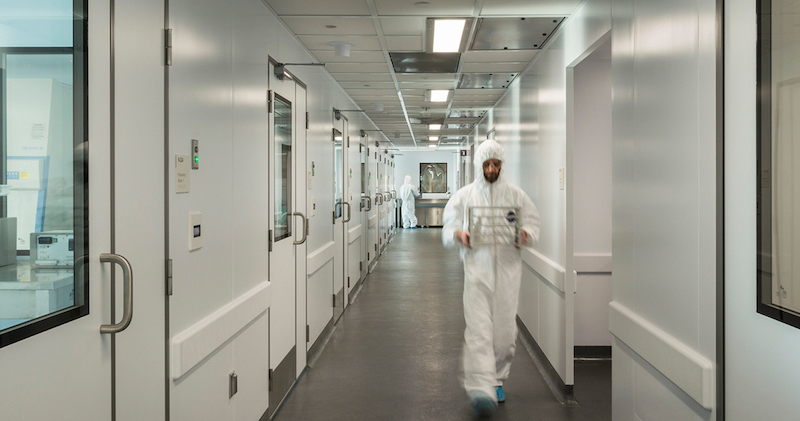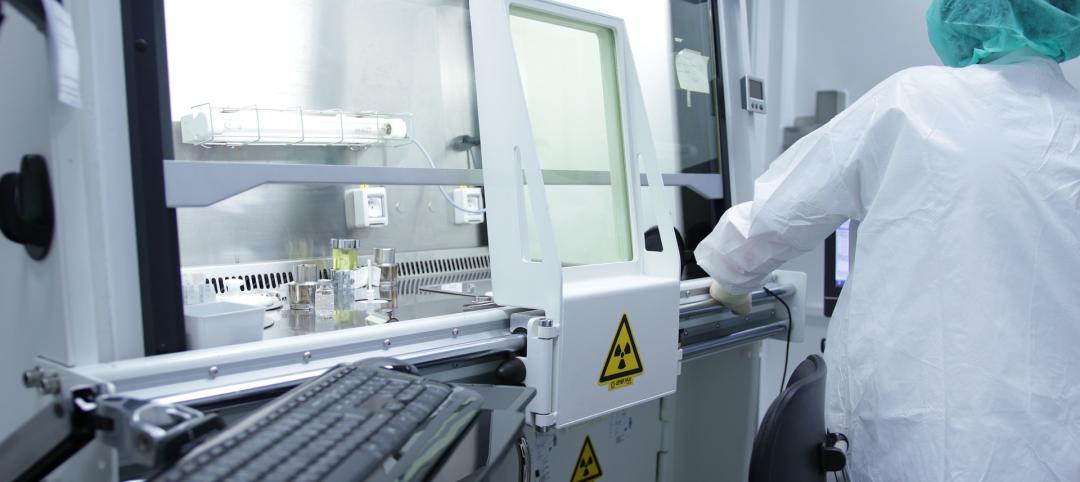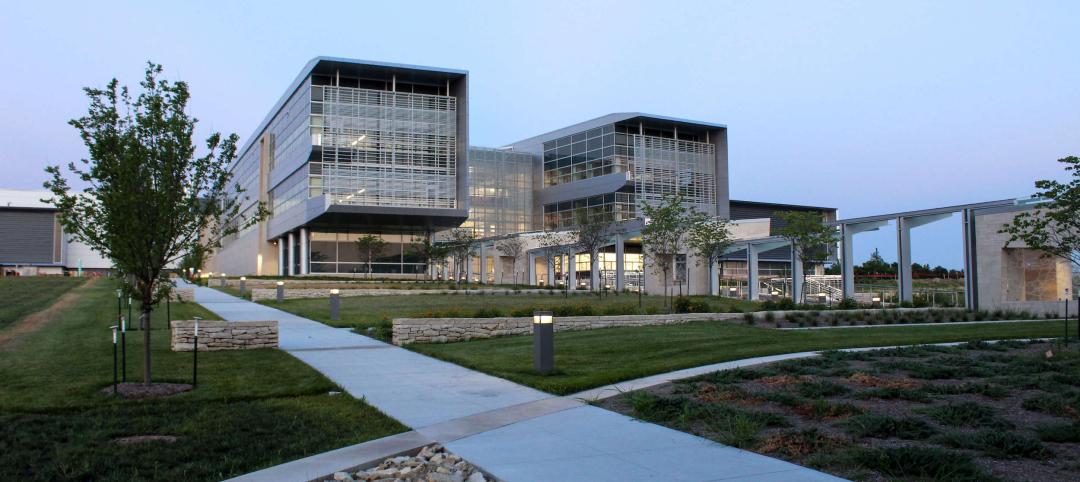Advances in the research and treatment of personalized medicine are making huge waves in the life sciences industry—especially in California. In fact, three of the top 10 ranked life sciences clusters are in California: No. 2, San Francisco; No. 3, San Diego; and No. 9, Los Angeles. Personalized medicine is one of the hottest trends in life science, so there is reason to take note of how the big shift will affect new and existing life science facilities.
Personalized medicine differs significantly from “traditional” research and development processes and is affecting the pharmaceutical manufacturing market in major ways. First, because the therapies produced for personalized medicine are targeted, manufacturing space is shifting from large-scale to small-scale and requires less validated piping and more single-use tubing and products. Second, manufacturing small amounts of these individualized therapies requires technology and equipment that are even more specialized—so having the deep expertise to design optimized, flexible laboratories is crucial.
There are two possible situations that start-ups and developers are encountering at this critical moment: they have existing manufacturing facilities that are not built to address current personalized medicine requirements, or they have available empty shell space for manufacturing that is ready to be designed for small-scale manufacturing. Below are a few major considerations these organizations should consider for small-scale lab manufacturing success.
Be Future-Focused
In this exciting world of personalized medicine, the spaces we design must be able to respond on a dime to evolving innovations and changing technologies. A laboratory designer who specializes in small-scale lab manufacturing should work with your team to anticipate space needs far into the future. We are seeing industry advancements such as Green Chemistry and 3D “bioprinting” technology that are completely changing current Good Manufacturing Processes (cGMP) and decreasing some typical standard process needs. The increased use of AI to complete redundant tasks is also affecting the way we design QA/QC laboratories and other support spaces. Having a broad understanding of how future innovations and technology can influence design saves time and money when planning a manufacturing space.
Understand Your End-User
Personalized medicine research and development requires the highest-quality individualized environments. Understanding the end-users who will ultimately occupy your space is critical. To design a truly innovative facility that will stand out to potential tenants or internal teams, consider both current design factors and possible building solutions that can be incorporated into the design now to adapt to future technology and manufacturing processes.
Also, consider what your end-users will manufacture within the facility. What public spaces will facilitate each user’s mission and culture? Often, the design focus is only on spaces that the FDA will visit and audit, but what about spaces intended to wow potential investors, patients and press? Support spaces often become important at this stage—not only for the scientists and researchers who occupy the space, but also for external audiences whom they need to impress.
Ensure Your Site is Large Enough
Even with this smaller-scale manufacturing, careful consideration and allocation of site space are essential to ensure necessary utilities perform optimally. Make sure there are adequate pads for outdoor generators. There are also many other utilities to consider, including cooling towers, transformers, gas, and delivery of materials. We recommend including a multi-story warehouse space with a full-height mechanical mezzanine. Additionally, loading requirements and truck turnarounds will ensure that your site is flexible enough for different forms of manufacturing.
Consider Your Contamination Strategy
Often, there are too few streams dedicated to materials handling in and out of facilities. Contamination is a major risk for pharmaceutical manufacturing, and small-scale manufacturing only magnifies this risk. Ensure that the building has enough dock doors and that dedicated paths exist for moving new materials into, and waste out of, the facility. We know that waste streams must be separated with both dedicated doors and physical barriers. Establishing non-crossing waste, finished product and raw materials streams are essential to FDA validation.
Make Security a Top Priority
With personalized medicine comes cutting-edge innovations, technologies, and even processes that are proprietary; these systems and spaces require space design that ensures confidentiality. Manufacturing spaces must have a high level of security in place that strategically considers design elements, such as where natural daylight and views into the facility are appropriate. This level of security not only needs to be integrated internally, but also should be a part of the overall design of the facility. The facility should look exciting, open, and welcoming while also maintaining security levels to safeguard proprietary processes.
Realize the True Ratios for Support Space
It may be surprising how much support space is recommended for small-scale lab manufacturing. For a 5,000-sf ISO-8 and tighter classified space, the recommended support space size should be at least three times the ISO space. These support spaces are critical to the facility’s success. Be sure to consider airlocks, storage and direct support spaces as these areas are often overlooked in a facility plan. Additionally, mechanical and other building support spaces dedicated to clean rooms and clean room support require adequate space—whether on a full-height mezzanine or outside the building. These clean manufacturing support areas can occupy large amounts of space, so understanding the need for such space is essential to the facility’s overall design.
Related Stories
Laboratories | Sep 20, 2023
Life sciences construction market is poised for a comeback: JLL
The life sciences commercial real estate market has undergone a reset this year but is well positioned to be the comeback kid as capital sources grow more confident and green shoots emerge, according to JLL’s 2023 Life Sciences Industry and Real Estate Perspective.
Laboratories | Aug 24, 2023
Net-zero carbon science center breaks ground in Canada
Designed by Diamond Schmitt, the new Atlantic Science Enterprise Centre (ASEC) will provide federal scientists and partners with state-of-the-art space and equipment to collaborate on research opportunities.
Giants 400 | Aug 22, 2023
Top 115 Architecture Engineering Firms for 2023
Stantec, HDR, Page, HOK, and Arcadis North America top the rankings of the nation's largest architecture engineering (AE) firms for nonresidential building and multifamily housing work, as reported in Building Design+Construction's 2023 Giants 400 Report.
Giants 400 | Aug 22, 2023
2023 Giants 400 Report: Ranking the nation's largest architecture, engineering, and construction firms
A record 552 AEC firms submitted data for BD+C's 2023 Giants 400 Report. The final report includes 137 rankings across 25 building sectors and specialty categories.
Giants 400 | Aug 22, 2023
Top 175 Architecture Firms for 2023
Gensler, HKS, Perkins&Will, Corgan, and Perkins Eastman top the rankings of the nation's largest architecture firms for nonresidential building and multifamily housing work, as reported in Building Design+Construction's 2023 Giants 400 Report.
University Buildings | Aug 7, 2023
Eight-story Vancouver Community College building dedicated to clean energy, electric vehicle education
The Centre for Clean Energy and Automotive Innovation, to be designed by Stantec, will house classrooms, labs, a library and learning center, an Indigenous gathering space, administrative offices, and multiple collaborative learning spaces.
Laboratories | Jul 10, 2023
U.S. Department of Agriculture opens nation’s first biosafety level 4 containment facility for animal disease research
Replacing a seven-decade-old animal disease center, the National Bio and Agro-Defense Facility includes the nation’s first facility with biosafety containment capable of housing large livestock.
Laboratories | Jun 23, 2023
A New Jersey development represents the state’s largest-ever investment in life sciences and medical education
In New Brunswick, N.J., a life sciences development that’s now underway aims to bring together academics and researchers to work, learn, and experiment under one roof. HELIX Health + Life Science Exchange is an innovation district under development on a four-acre downtown site. At $731 million, HELIX, which will be built in three phases, represents New Jersey’s largest-ever investment in life sciences and medical education, according to a press statement.
University Buildings | May 17, 2023
New UC Irvine health sciences building supports aim to become national model for integrative health
The new College of Health Sciences Building and Nursing & Health Sciences Hall at the University of California Irvine supports the institution’s goal of becoming a national model for integrative health. The new 211,660-sf facility houses nursing, medical doctorate, pharmacy, philosophy, and public health programs in a single building.
Sustainability | May 11, 2023
Let's build toward a circular economy
Eric Corey Freed, Director of Sustainability, CannonDesign, discusses the values of well-designed, regenerative buildings.

















